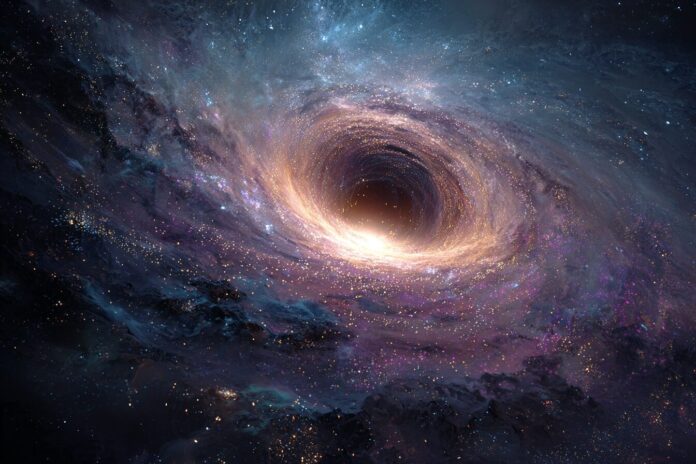Unveiling the Cosmos: Discovering the Most Ancient Black Hole
In the vast expanse of our universe, each astronomical discovery unravels part of an ancient mystery. Most importantly, the confirmation of the oldest known black hole—formed just 500 million years after the Big Bang, over 13.3 billion years ago—has ignited new debates and inspired further explorations. This discovery, positioned at the heart of the galaxy CAPERS-LRD-z9, challenges conventional theories about the formation of supermassive black holes in the early universe.
Because cosmic phenomena often defy our expectations, scientists are re-evaluating previous assumptions about the timeline of black hole creation. In this pursuit, the newly uncovered black hole, which is 300 million times the mass of our Sun, opens up discussions about rapid growth processes, direct collapse, and stark differences in early cosmic conditions as highlighted by recent studies from Popular Science and UT Austin News.
The James Webb Space Telescope: A Gateway to the Cosmic Dawn
The James Webb Space Telescope (JWST) has emerged as a revolutionary tool, empowering astronomers to peer into the early epochs of the universe with unprecedented clarity. Besides that, its advanced technology captures faint light from the farthest reaches, thereby unveiling phenomena that were once hidden from view. This breakthrough instrument first identified the galaxy CAPERS-LRD-z9 among the enigmatic group of galaxies known as “Little Red Dots,” a term coined for their distinct red hues and compact nature.
Furthermore, the JWST’s in-depth data collection has allowed researchers to analyze the spectral signatures of these early galaxies in detail. Because each spectrum provides clues about the galaxy’s composition and the surrounding interstellar material, scientists can appreciate how the environment hosted such a massive black hole at a time when the cosmos was remarkably young. Insights drawn from TPR and Space.com further reinforce the telescope’s critical role in expanding our cosmic horizons.
Confirming the Earliest Supermassive Black Hole
Through meticulous spectroscopic analysis, an international team led by researchers at the University of Texas at Austin’s Cosmic Frontier Center has provided conclusive evidence of the universe’s earliest supermassive black hole. Most importantly, by splitting light into its component wavelengths, scientists observed gas swirling at extraordinary speeds around the black hole, a phenomenon that unmistakably signals its presence.
Because these spectral fingerprints are rare and powerful indicators, the data cement the black hole’s status as not only the oldest but also one of the most massive entities known from the dawn of time. Therefore, this discovery pushes the boundaries of our understanding regarding the formation mechanisms that could produce such a colossal object in less than a billion years after the Big Bang.
Challenging Established Models of Black Hole Formation
The existence of this monumental black hole compels astronomers to challenge long-held theories about black hole formation. Traditional models suggest that black holes gradually form from the collapse of massive stars, but the rapid emergence of a black hole of this scale suggests alternative scenarios must be in play. Most importantly, theories such as direct collapse and rapid gas accretion are gaining increasing attention as plausible explanations.
Because this discovery contradicts gradual formation models, it underscores the need for revised simulations and theoretical frameworks. Therefore, researchers are now probing the possibility that early galaxies provided a unique environment that accelerated black hole growth, a notion supported by recent reports from Cloudy Nights and other scholarly sources.
Why Early Black Holes Matter in Cosmic Evolution
Ancient black holes are not isolated phenomena; they play a pivotal role in driving the evolution of galaxies. Most importantly, the gravitational influence exerted by these colossal objects affects star formation, shapes galactic structures, and even contributes to the reionization of the intergalactic medium during the universe’s formative epochs. This ripple effect demonstrates how black holes serve as both end-products and catalysts in cosmic evolution.
Because the study of these primordial entities informs our understanding of the larger cosmic narrative, their impact reaches far beyond astrophysical curiosities. Therefore, uncovering the secrets of early black holes not only refines our cosmic models but also provides insight into the distribution of matter and energy in the nascent universe.
The Road Ahead: Exploring the Universe’s Dark Ages
Looking forward, the journey to explore our universe’s earliest chapters has only just begun. Most importantly, discoveries like CAPERS-LRD-z9 provide compelling targets for further study as we seek to understand the conditions that prevailed during the first billion years. With tools like the JWST and forthcoming next-generation observatories, astronomers are poised to delve deeper into the mysteries of the early cosmos.
Because every new observation offers potential clues about cosmic evolution, upcoming surveys are expected to reveal even more ancient black holes and formative galactic structures. Therefore, the road ahead promises a revolution in our understanding of astrophysical processes, potentially rewriting textbooks as researchers harness both direct observation and theoretical models to illuminate the universe’s dark ages. As evidenced by ongoing discussions on platforms like Space.com, the future of cosmic exploration is extraordinarily bright despite its ancient origins.
Further Reading and In-Depth References
For readers eager to learn more about these groundbreaking discoveries, numerous resources provide additional layers of insight into early cosmic phenomena. Besides that, articles and discussions on sites such as Popular Science and UT Austin News offer fascinating perspectives on black hole formation and galactic evolution.
Because the field of astrophysics is continually evolving, staying updated with the latest discoveries and technological advancements is essential. Therefore, these reference links not only bolster our understanding but also underscore the collaborative nature of scientific inquiry as researchers worldwide work to piece together the story of our cosmos.



